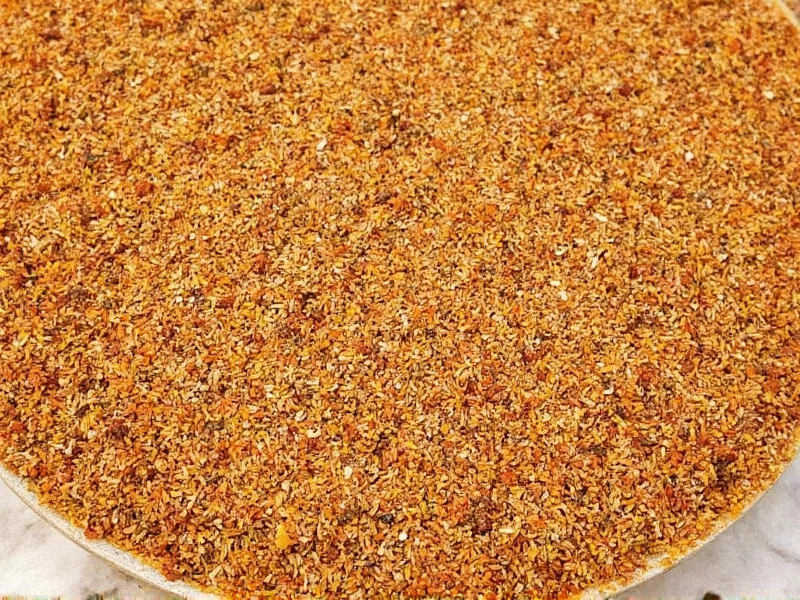A well-crafted chicken seasoning blend transforms ordinary poultry dishes into restaurant-quality meals with minimal effort. Professional chefs and home cooks alike rely on these versatile spice mixes to create consistent, flavorful results across various cooking methods. The magic lies in the careful balance of aromatic herbs, savory umami elements, and subtle heat that penetrates chicken's mild flavor profile.
Essential Components of a Quality Chicken Seasoning Blend
Creating the perfect chicken seasoning blend requires understanding each ingredient's role. Paprika provides both color and mild sweetness, while garlic and onion powders deliver foundational savory notes. Dried thyme and rosemary contribute earthy complexity, and black pepper adds gentle heat. Salt remains crucial for flavor enhancement, though quantities should be adjusted based on dietary needs.
| Core Ingredient | Primary Function | Recommended Proportion |
|---|---|---|
| Paprika | Color and mild sweetness | 30% |
| Garlic Powder | Savory depth | 20% |
| Onion Powder | Umami foundation | 20% |
| Dried Thyme | Earthy herbal notes | 10% |
| Black Pepper | Subtle heat | 10% |
| Salt | Flavor enhancement | 10% |
Creating Your Homemade Chicken Seasoning Blend
Follow this simple process for a superior homemade chicken seasoning blend that beats store-bought alternatives. The complete homemade chicken seasoning recipe yields enough for multiple uses while maintaining peak freshness.
Basic Chicken Seasoning Recipe
Combine in an airtight container:
- 3 tablespoons paprika (smoked for deeper flavor)
- 2 tablespoons garlic powder
- 2 tablespoons onion powder
- 1 tablespoon dried thyme
- 1 tablespoon freshly ground black pepper
- 1 tablespoon fine sea salt (optional for low-sodium diets)
Whisk thoroughly until uniform in color. For optimal flavor development, let the mixture rest for 24 hours before use, allowing the spices to harmonize. This versatile chicken seasoning mix works equally well as a dry rub or seasoning added during cooking.
Flavor Variations for Different Cooking Styles
Adapt your chicken seasoning blend to match specific cooking techniques and flavor preferences. These customizable poultry seasoning blend variations address different culinary needs while maintaining the core flavor profile.
Mediterranean Herb Variation
Replace 1 tablespoon of thyme with equal parts dried oregano and marjoram. Add 1 teaspoon lemon zest powder for brightness. Ideal for roasted chicken and grilled preparations, this healthy chicken seasoning without additives complements olive oil-based marinades.
Spicy Cajun-Inspired Blend
Increase black pepper to 1.5 tablespoons and add 1 teaspoon cayenne pepper plus 1/2 teaspoon celery seed. This easy chicken rub for grilling delivers bold flavor that stands up to high-heat cooking methods while maintaining balance.
Low-Sodium Alternative
Omit salt entirely and increase paprika and garlic powder by 1/2 tablespoon each. Add 1 teaspoon mushroom powder for natural umami. This version maintains robust flavor while accommodating dietary restrictions.
Maximizing Flavor Impact in Cooking
Understanding how to use chicken seasoning effectively separates adequate results from exceptional ones. For dry rub applications, generously coat chicken surfaces and refrigerate for at least 2 hours (or overnight) before cooking. The extended contact time allows flavors to penetrate beyond the surface.
When using as a finishing seasoning, add during the last 5-10 minutes of cooking to preserve volatile aromatic compounds that dissipate with prolonged heat exposure. For soups and stews, bloom the seasoning in oil before adding liquids to maximize flavor extraction from the spices.
Storage and Freshness Preservation
Homemade seasoning blends maintain peak flavor for 3-4 months when stored properly. Use amber glass jars with tight-sealing lids to protect from light and moisture. Avoid storing near heat sources like stovetops, which accelerate flavor degradation. For extended shelf life, freeze portions in small containers for up to 6 months.
Check freshness by aroma test: vibrant blends should have strong, distinct scents from each component. If the mixture smells dusty or one-dimensional, it's time to make a new batch. Properly stored, your versatile chicken seasoning mix will consistently deliver restaurant-quality results.
Common Seasoning Mistakes to Avoid
Many home cooks make preventable errors that compromise their chicken seasoning results. Applying seasoning immediately before cooking gives insufficient time for flavor penetration. Using old spices creates flat, one-dimensional flavor profiles. Over-seasoning overwhelms chicken's delicate taste, while under-seasoning wastes the blend's potential.
The best chicken seasoning blend ingredients maintain balance—no single component should dominate. When adjusting recipes, change only one variable at a time to understand its specific impact on the final flavor profile.
Frequently Asked Questions
How much chicken seasoning should I use per pound of chicken?
Use 1-1.5 tablespoons of seasoning blend per pound of chicken. For bone-in pieces, apply 3/4 tablespoon per pound since bones reduce the actual meat quantity. Always rub seasoning under the skin when possible for maximum flavor penetration.
Can I use fresh herbs instead of dried in my seasoning blend?
Fresh herbs don't work well in dry seasoning blends due to moisture content causing clumping and spoilage. For fresh herb flavor, create a wet marinade instead. The dried herb ratio in seasoning blends is specifically calibrated for optimal shelf stability and flavor concentration.
Why does my homemade chicken seasoning taste different from store-bought?
Commercial blends often contain anti-caking agents, MSG, and higher salt content for shelf stability and immediate flavor impact. Homemade versions focus on pure spice flavors that develop more gradually. Adjust proportions gradually to match preferred flavor profiles while maintaining cleaner ingredient quality.
What's the best way to apply seasoning to grilled chicken?
For grilled chicken, apply seasoning blend 2-4 hours before cooking, allowing flavors to penetrate. Create a light oil barrier first to help the spices adhere. During grilling, avoid excessive flipping which removes the seasoning crust. For best results with this easy chicken rub for grilling, maintain consistent heat to prevent burning the spices.











 浙公网安备
33010002000092号
浙公网安备
33010002000092号 浙B2-20120091-4
浙B2-20120091-4